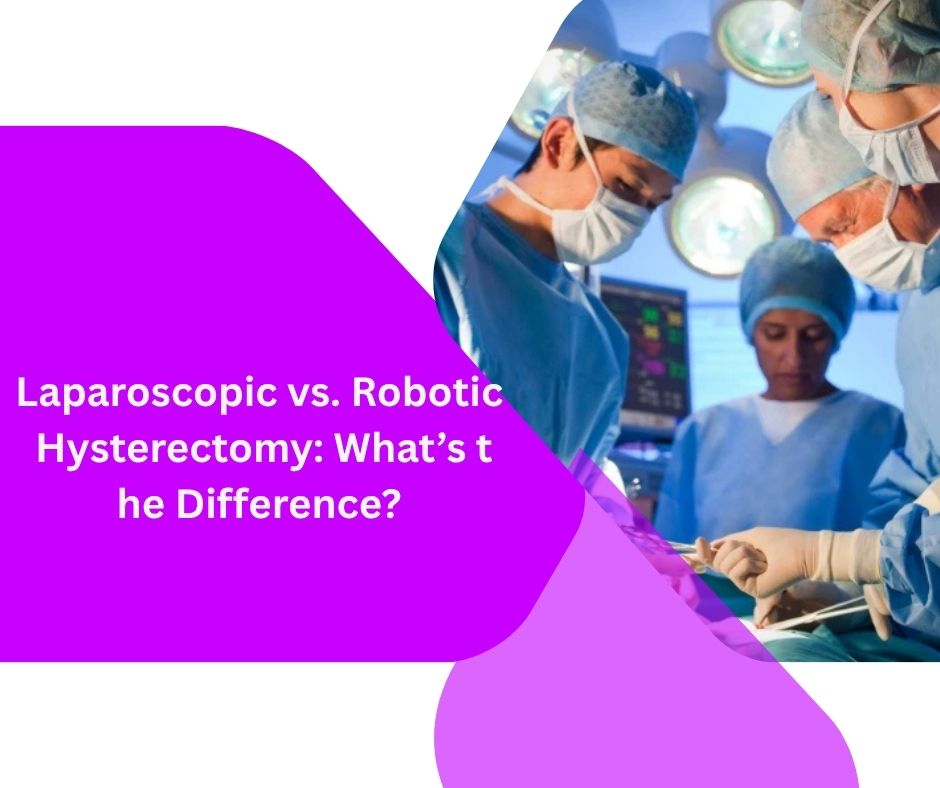
A hysterectomy is a surgical procedure to remove the uterus and, in some cases, nearby reproductive organs. It’s often performed to treat conditions such as fibroids, endometriosis, uterine prolapse, chronic pelvic pain, or cancer. With advancements in medical technology, two minimally invasive techniques—laparoscopic and robotic hysterectomy—have become popular alternatives to traditional open surgery. While both methods offer faster recovery and less pain, they differ in technique, precision, and technology.
What Is a Laparoscopic Hysterectomy?
A laparoscopic hysterectomy involves small incisions made in the abdomen through which a laparoscope (a thin tube with a camera) and specialized surgical instruments are inserted. The surgeon operates by viewing magnified images on a monitor, allowing for accurate cutting and minimal blood loss. This method significantly reduces scarring and hospital stay compared to open surgery.
Benefits of Laparoscopic Hysterectomy
- Smaller incisions and minimal scarring
- Shorter hospital stay and quicker recovery
- Less postoperative pain
- Reduced risk of infection and blood loss
Limitations of Laparoscopic Hysterectomy
While laparoscopic hysterectomy is effective, it requires high surgical skill and precision. The surgeon’s hand movements are directly responsible for every action, which can sometimes be limited in terms of flexibility and dexterity, especially in complex cases.
What Is a Robotic Hysterectomy?
Robotic hysterectomy is a technologically advanced version of laparoscopic surgery. It utilizes the da Vinci Surgical System, where the surgeon controls robotic arms through a console. These robotic arms replicate the surgeon’s hand movements but with enhanced precision, stability, and a greater range of motion. A 3D high-definition camera provides superior visualization of the surgical site, allowing for meticulous dissection and suturing.
Benefits of Robotic Hysterectomy
- Enhanced precision and control
- Superior 3D visualization for the surgeon
- Greater dexterity for complex cases
- Minimal tissue trauma and faster recovery
- Reduced postoperative discomfort and blood loss
Limitations of Robotic Hysterectomy
The main limitations include higher costs due to advanced technology and slightly longer operating times in some cases. Availability may also be limited to hospitals equipped with robotic systems.
Key Differences Between Laparoscopic and Robotic Hysterectomy
While both are minimally invasive, the key distinction lies in how the surgeon performs the procedure. In laparoscopic surgery, instruments are manually controlled by the surgeon, whereas robotic surgery enhances the surgeon’s capabilities with computer-assisted robotic arms. This results in improved accuracy, especially in complex cases involving adhesions or endometriosis.
In terms of recovery, both methods offer faster healing than traditional open surgery. However, robotic hysterectomy may lead to even less postoperative pain and a shorter return-to-normal period due to enhanced precision and minimal tissue handling.
Which One Is Right for You?
The choice between laparoscopic and robotic hysterectomy depends on several factors, including the patient’s condition, anatomy, and medical history, as well as the surgeon’s expertise and the hospital’s technology. Consulting a skilled gynecologist experienced in both techniques is essential to determine the most appropriate approach for your case.
Conclusion
Both laparoscopic and robotic hysterectomies are excellent options for women seeking minimally invasive solutions for uterine conditions. While laparoscopic surgery offers proven effectiveness with quick recovery, robotic-assisted procedures provide enhanced precision and control, especially in complex cases.
Dr. Preeti Tandon provides the best and most advanced hysterectomy services, offering personalized treatment plans using both laparoscopic and robotic techniques for safe, effective, and faster recovery outcomes.



